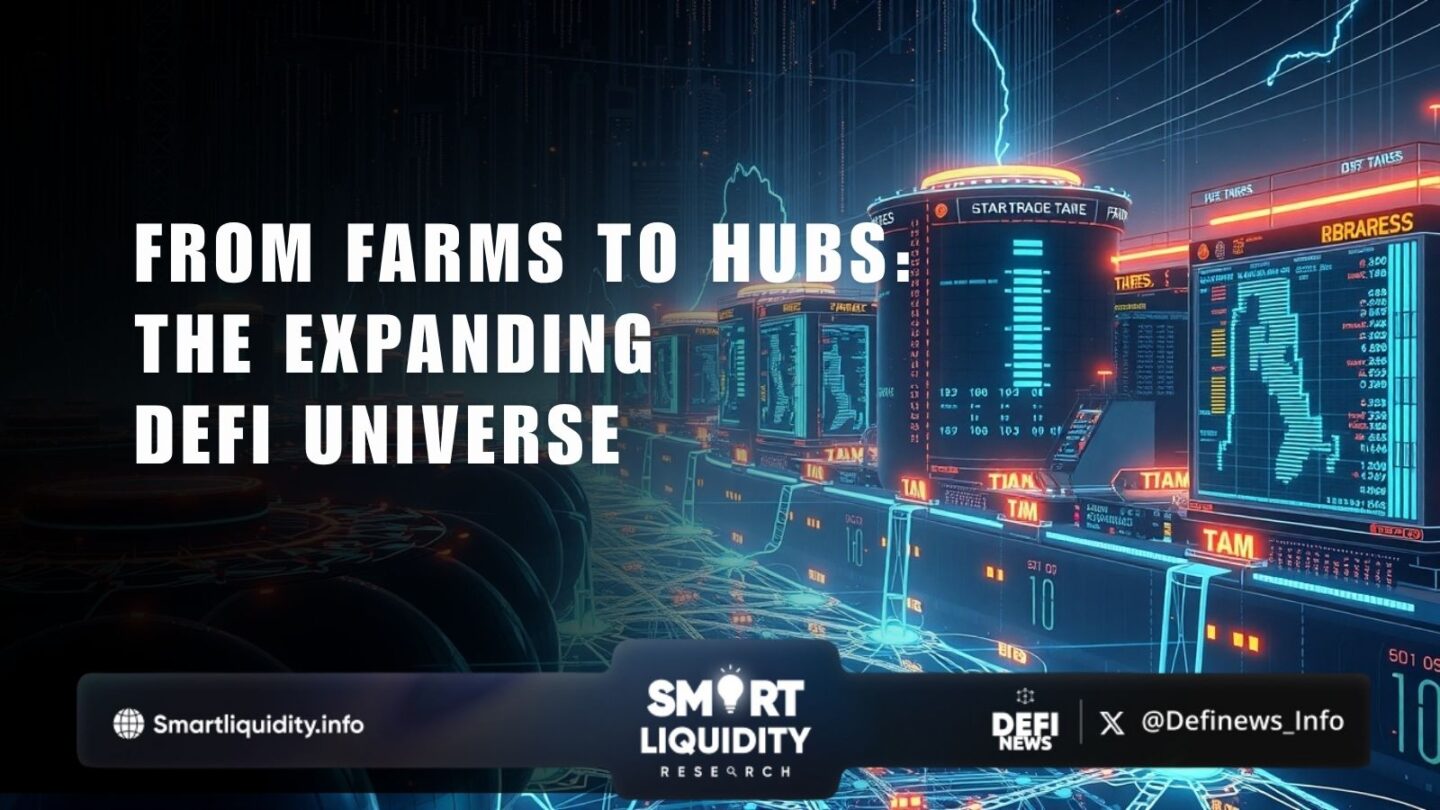From Farms to Hubs: The Expanding DeFi Universe


From Farms to Hubs: The Expanding DeFi Universe! When you first heard of decentralized finance (DeFi), you may have imagined yield farmers donning digital overalls, poring over liquidity pools, and harvesting tokens like cryptocurrency corn. But today’s DeFi is no longer just about farming—it’s evolving into a sophisticated network of integrated liquidity hubs, cross-chain ecosystems, and modular finance structures.
Let’s roll up our sleeves and dive into this evolution—from the era of yield farming to the rise of high-functioning DeFi hubs.
1. Harvesting the Yield: The Farming Era
In the beginning, DeFi’s allure was simple and seductive: supply crypto assets, earn rewards. That’s the essence of yield farming—users provide liquidity or stake tokens in protocols to generate yield.
- At its core, you deposit tokens into a liquidity pool (e.g., the Uniswap ETH/USDC pool). That pool enables trades, and you earn a share of fees plus any extra incentives.
- Add the token-reward layer (governance tokens like UNI, COMP, etc.), and you get what’s often called liquidity mining.
- The benefits? Capital efficiency (your idle crypto starts working), composability (you can stack strategies), and permissionless access.
But it wasn’t all sunshine. Risks stalked the landscape: impermanent loss, smart-contract vulnerabilities, protocol exits, and volatile token rewards.
Also, while farming exploded, liquidity became highly fragmented across protocols, chains, and pools.
2. Why “Farms” Alone Won’t Cut It Anymore
The farming phase served its purpose—but it revealed fundamental limitations:
- Fragmentation & inefficiency: Many isolated pools with duplicated liquidity meant capital was under-utilised.
- Token-reward incentives fading: High APYs driven by emissions aren’t sustainable long-term. In fact, by early 2025, most yield was coming from real protocol revenue, not just token giveaways.
- User experience & scale challenges: Gas fees, slippage, cross-chain bridge risks—these limit mainstream adoption.
So DeFi began to evolve. The next growth phase centers on hubs—architectures and protocols that consolidate liquidity, reduce fragmentation, and provide modular infrastructure for multiple use-cases.
3. Enter the Hubs: Aggregation, Modularity, Connectivity
The “hub” metaphor in DeFi signifies architecture where central pools or infrastructure modules serve many markets, protocols, or “spokes”. Here are key developments:
a) Liquidity Aggregation & Hubs
Projects such as Kyber Network explicitly define themselves as “liquidity hubs” for DeFi—pulling in liquidity from many sources to serve traders and protocols.
Another example: Orbs Network’s “Liquidity Hub” layer integrates external liquidity across multiple AMMs, chains, and private inventories to deliver better swaps.
b) Modular Finance & Hub-Spoke Architecture
More recently, protocols like Aave (v4) are adopting a hub-and-spoke model: a central liquidity hub/distribution layer, and customizable “spokes” that service different risk profiles, asset classes (including RWAs — real-world assets), chains, etc.
This shift aims to:
- Improve capital efficiency (one pool serves many markets)
- Reduce silos and fragmentation
- Enable tailored risk profiles per spoke, while sharing a robust central backbone
c) Cross-Chain & Composable Environments
Hubs also facilitate connectivity across chains, enabling users to access capital efficiently, trade with lower slippage, and build layered strategies. DeFi is moving away from isolated islands toward an inter-linked, interoperable ecosystem.
4. What It Means for Yield Farmers & On-Chain Traders Like You
As someone targeting yield farms and on-chain trading, the hub era changes the game. Here’s what to watch:
- Yield sourcing: Instead of chasing the highest token-emission farm, look for infrastructure that offers real yield (fees, interest) on well-capitalised hubs. The farming boom’s cocktail-shake of incentives is settling.
- Capital efficiency wins: Hubs reduce wasted liquidity. Your assets may earn better returns if deployed via protocols that use hub architectures.
- Reduced friction: Better execution (less slippage, improved routing), cross-chain access, and less protocol-jumping.
- Risk profile shifts: While hubs bring efficiency, they also mean you’re centralising exposure in core protocols; smart-contract risk, protocol governance, tokenomics, and systemic risk remain.
- Strategy evolution: Farming still exists, but may be more about composability—staking LP tokens, using yield aggregators, leveraging hub-enabled infrastructure. Tools such as yield aggregators were built to simplify farming across protocols.
5. A Word of Caution: Hubs Don’t Mean Risk-Free
Infrastructure evolution doesn’t erase the hazards. Key issues:
- Smart-contract risk remains. Just because it’s a hub doesn’t mean it’s perfect.
- Liquidity pooling brings its own dynamics: even hubs can be subject to hidden slippage, governance issues, or yield compression.
- Fragmentation is being addressed—but new hubs can themselves become central points of failure.
- Adoption and scale matter. A hub is only as strong as the network around it.
6. Looking Ahead: What’s Next in DeFi’s Hub Era
- Real-world asset (RWA) integration at scale: As hub structures integrate financing for real-world assets, DeFi moves beyond crypto-native assets. (See Aave’s spoke model.)
- AI-enabled strategies & automation: With bigger pools and standardised infrastructure, automation and meta-strategies will proliferate.
- Chain-agnostic hub networks: The next maturity step is hub systems that span many chains seamlessly.
- User-friendly tooling: Yield farmers and traders will gravitate to ecosystems where hubs simplify routing, optimise returns, and manage risk automatically.
Conclusion: From Novice Farmer to Infrastructure-Savvy Strategist
The journey from “plant tokens, harvest yield” to “deploy into infrastructure hubs, access layered markets” marks DeFi’s transition from hobbyist experiments to robust financial architecture. If yield farming was the wild west, hubs are the metropolis rising around it.
If you’re looking to engage on-chain—whether through farms, liquidity pools, or trading—keeping an eye on hub-based infrastructure gives you a strategic advantage. It’s not just about the highest APY anymore—it’s about alignment with the backbone of DeFi’s future.




